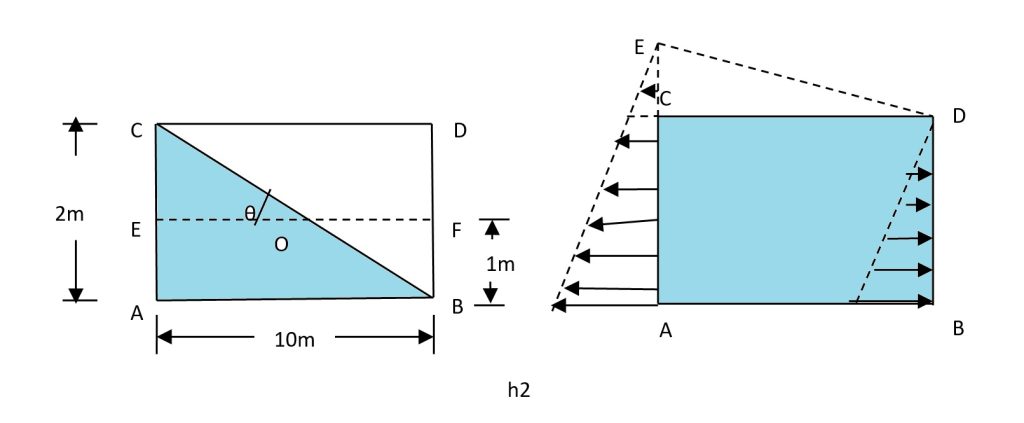Problem Statement
For the velocity profile given below, compute the displacement thickness and momentum thickness: u/U = 3/2 (y/δ) – 1/2 (y/δ)² Where U = free stream velocity, u = velocity in boundary layer at a distance y and δ = boundary layer thickness.

Given Data
Solution Approach
To determine the displacement thickness (δ*) and momentum thickness (θ), we need to apply their definitions and integrate the velocity profile across the boundary layer thickness.
Calculations
Velocity Profile Analysis
Step 1: Given velocity profile in the boundary layer:
This can be rewritten as:
Step 2: Calculate the displacement thickness (δ*) using its definition:
Substituting the velocity profile:
Integrating term by term:
Evaluating at the limits:
Step 3: Calculate the momentum thickness (θ) using its definition:
Substituting the velocity profile:
Expanding the multiplication:
Simplifying:
Integrating term by term:
Evaluating at the limits:
Displacement Thickness (δ*) = 5δ/12
Momentum Thickness (θ) = 19δ/120
Detailed Explanation
Physical Meaning of Displacement Thickness
The displacement thickness (δ*) represents the distance by which the external streamlines are displaced outward due to the reduction in mass flow rate within the boundary layer. In this case, δ* = 5δ/12 ≈ 0.417δ, which means the effective displacement is about 41.7% of the boundary layer thickness.
Physical Meaning of Momentum Thickness
The momentum thickness (θ) represents the loss of momentum flux in the boundary layer compared to an inviscid flow. For this velocity profile, θ = 19δ/120 ≈ 0.158δ, indicating that the momentum deficit is about 15.8% of the boundary layer thickness.
Boundary Layer Analysis
The ratio of displacement thickness to momentum thickness (δ*/θ) is a crucial parameter in boundary layer analysis and is often called the shape factor (H):
The shape factor provides information about the nature of the boundary layer:
- For a laminar Blasius boundary layer, H ≈ 2.59
- For turbulent boundary layers, H is typically between 1.3 and 1.5
The calculated shape factor (H ≈ 2.632) suggests that this velocity profile represents a laminar boundary layer that might be slightly different from the Blasius solution, possibly due to a pressure gradient or other effects.
Practical Applications
Understanding boundary layer parameters like displacement and momentum thickness is crucial in:
- Aerodynamic design of airfoils and wings
- Analysis of flow separation and drag prediction
- Design of diffusers and nozzles in fluid machinery
- Calculation of skin friction and heat transfer in fluid flows
- Computational fluid dynamics (CFD) modeling validation
Significance of the Velocity Profile
The given velocity profile (u/U = 3y/2δ – y²/2δ²) satisfies the no-slip condition at y = 0 (where u = 0) and reaches the free-stream velocity at y = δ (where u = U). It represents a profile with an inflection point, which might indicate the presence of an adverse pressure gradient in the flow.
The analysis of such boundary layer parameters provides engineers with valuable insights into flow behavior near surfaces, which is essential for predicting performance characteristics of fluid systems and optimizing designs for reduced drag, energy efficiency, and enhanced heat transfer.




